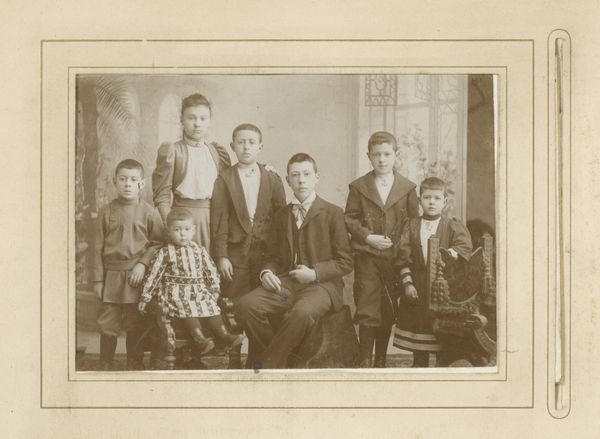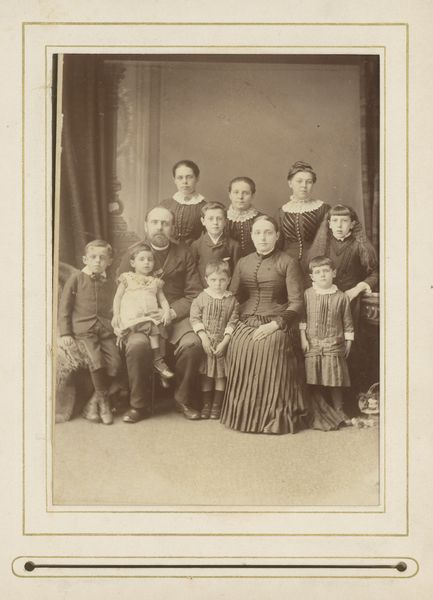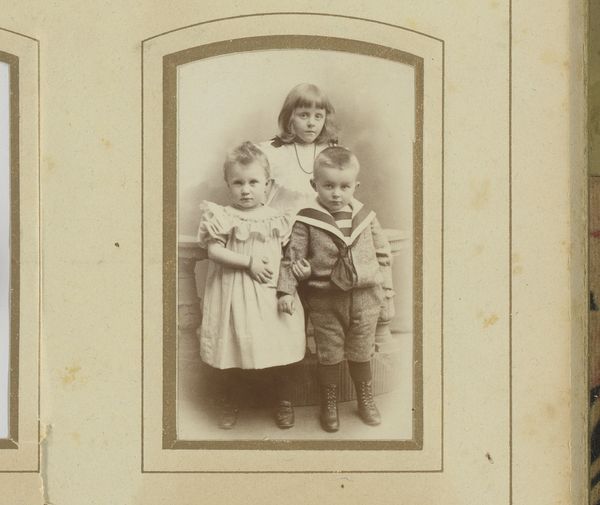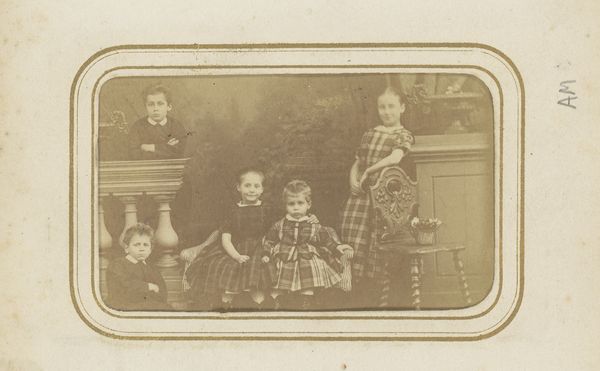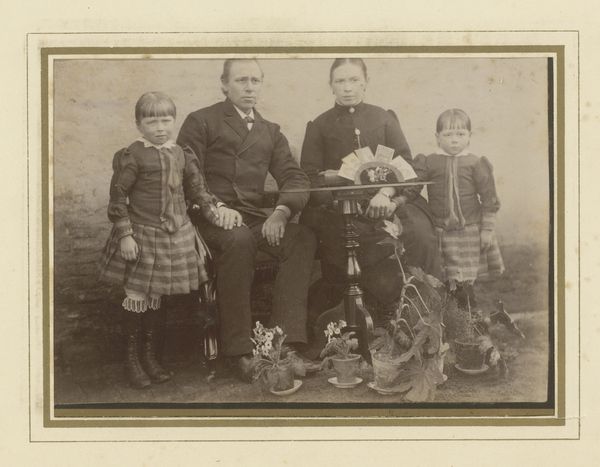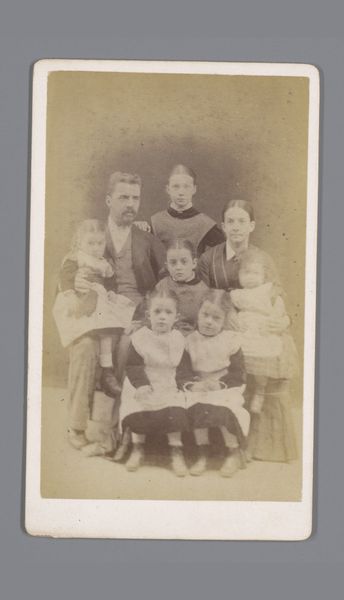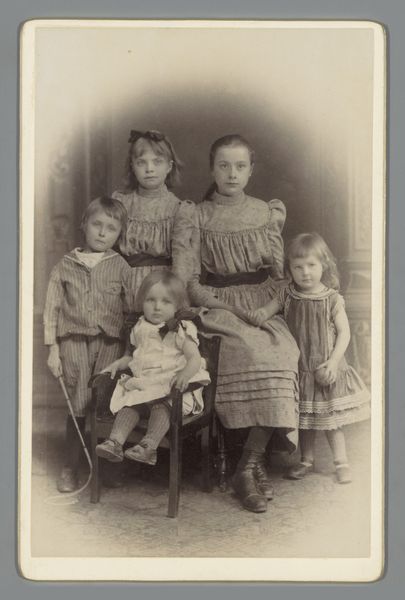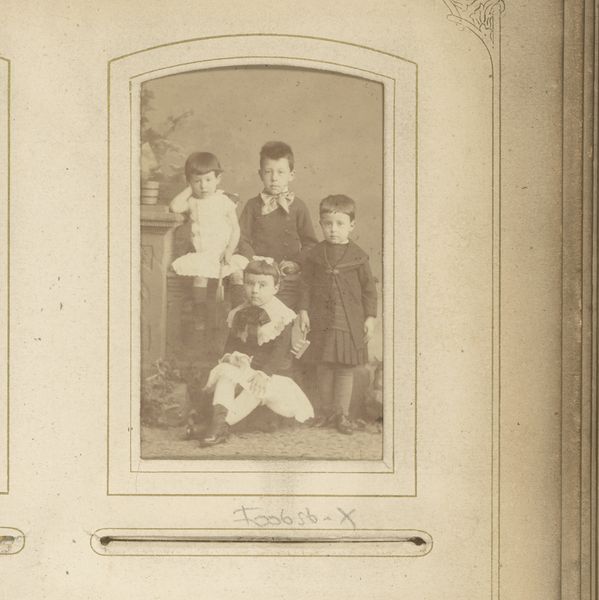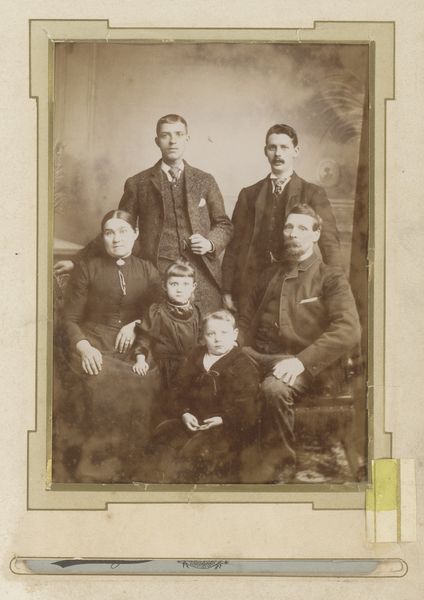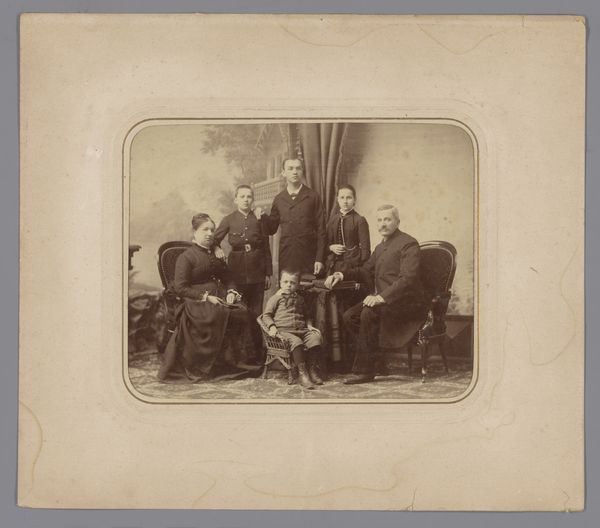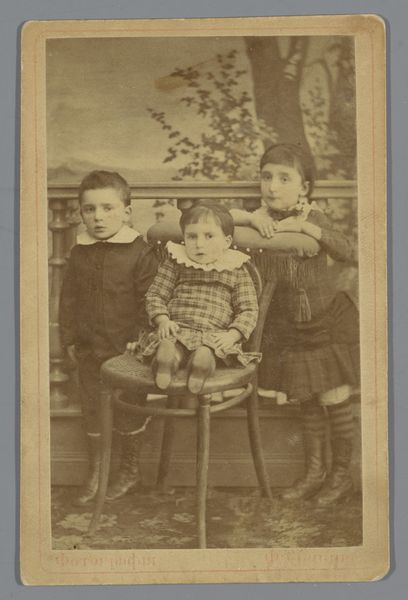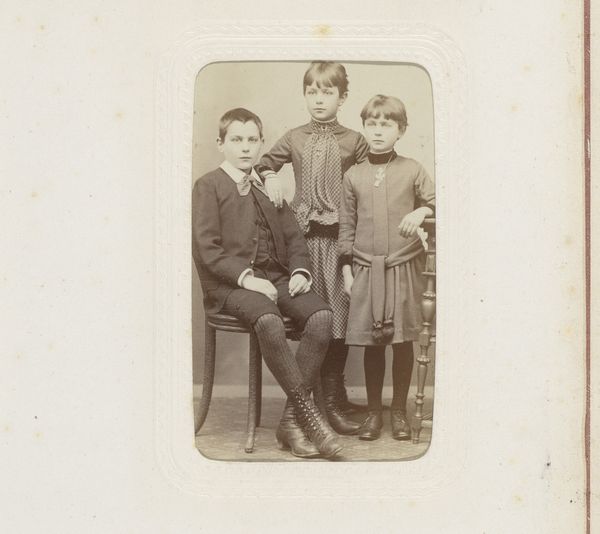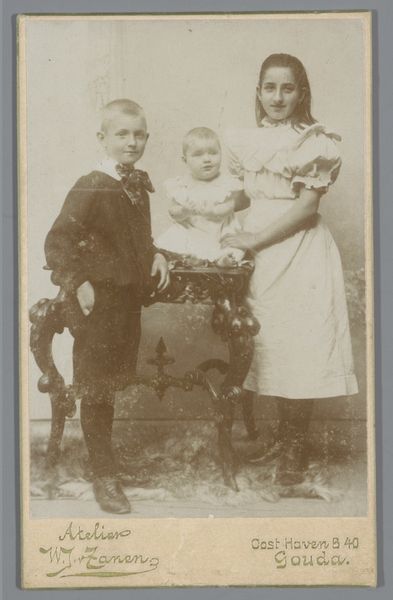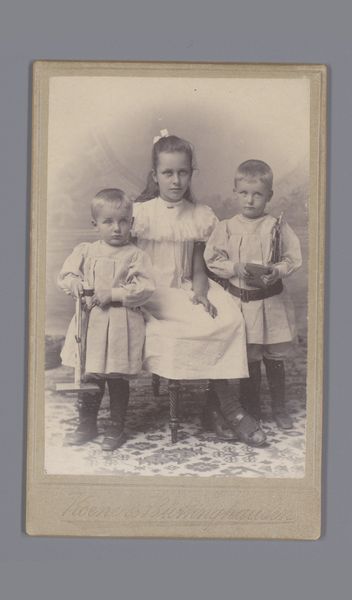
photography, gelatin-silver-print
#
portrait
#
pictorialism
#
photography
#
historical photography
#
group-portraits
#
gelatin-silver-print
#
19th century
Dimensions: height 138 mm, width 98 mm
Copyright: Rijks Museum: Open Domain
Curator: Let's discuss this intriguing piece from the Rijksmuseum's collection: a gelatin-silver print identified as a group portrait by Woodbury & Page, active roughly between 1857 and 1908. The title reads "Groepsportret van vier jongens en twee meisjes"—a group portrait of four boys and two girls. Editor: It has such a solemn feel to it, almost melancholic. The subdued tonality, combined with the formality of their poses, projects a somberness, despite the innocence one might expect from children. Curator: Exactly. Understanding photographic portraits of this era requires a deep dive into Victorian ideals of childhood, class, and the burgeoning influence of photography on social representation. The clothes, for example, they denote very particular gender roles of the time. The boys' sailor suits and one girl's hair ribbon compared to other girl's dress open dialogue about societal status. Editor: The composition is also carefully constructed, look at the contrast of the young boy wearing an early form of a suit standing slightly in front of his peers. Its strategic use creates visual hierarchies—that formal arrangement reinforces a clear social order. But beyond its symbolic meaning, the lighting and depth of field create an isolating effect around each individual child. Curator: It's difficult not to think about the political economy surrounding the image, the legacy of colonialism imbedded in Western gaze that captured their lives in the colonies. This studio would have been patronized by wealthy elites, traders, and officials. It shows not only who they are, but what social norms they were meant to conform to. Editor: I am also captivated by the textures; from the subtle backdrop to the patterns of clothing that lend it dimension. Curator: Those very tactile qualities, while appealing on the surface, obscure the deeper complexities of representation and power dynamics. How these photographs contribute to the formation of identity within these social constructs and how they circulate is a powerful intersectional framework. Editor: On the level of pure form, though, I find myself drawn to the tonal range—a very precise formal quality. The gradations from light to shadow. Curator: It's those very contrasts which reveal not just light and shade, but layers of historical meaning. Editor: It's precisely that interplay of light and shadow which lends the piece so much power to interpret. Curator: Leaving us to continue interpreting, centuries later, about their life in this historical and colonial setting.
Comments
No comments
Be the first to comment and join the conversation on the ultimate creative platform.
